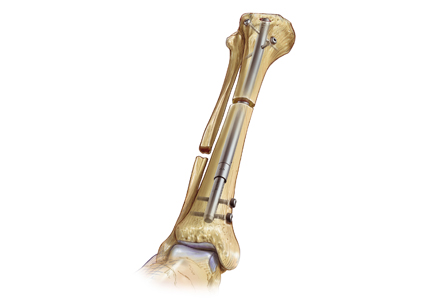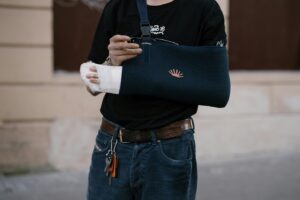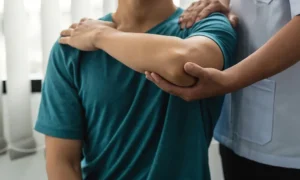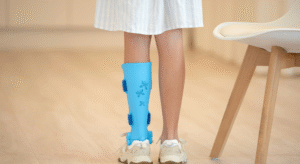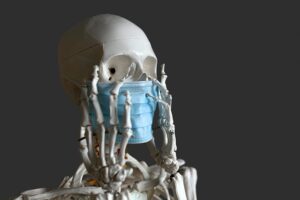Key pointers:
- Difference between limb lengthening and leg deformity correction
- Common reasons for uneven leg length or limb misalignment
- How each procedure works and when it’s recommended
- Recovery, rehabilitation, and long-term outlook
- Why early orthopaedic assessment matters for balance and mobility
What’s the Difference Between Limb Lengthening and Leg Correction?
At first glance, limb lengthening and leg correction may sound alike, they both involve improving the shape or length of your legs. But medically, these are distinct treatments designed for different goals.
- Limb Lengthening focuses on increasing bone length to correct leg length discrepancy, when one leg is shorter than the other due to growth problems, injury, or congenital conditions.
- Leg Correction (Deformity Correction) aims to straighten or realign bones that have developed abnormally, such as bow legs (genu varum) or knock knees (genu valgum).
Both procedures are carried out by orthopaedic surgeons who specialise in bone reconstruction and alignment. Understanding which one you may need starts with identifying the cause of your leg imbalance or deformity.
Side-by-Side Comparison
|
Aspect |
Limb Lengthening |
Leg Correction (Deformity Correction) |
|
Goal |
To increase the length of a shorter limb |
To straighten or realign bones (correct bow legs or knock knees) |
|
Common Causes |
Congenital short limb, growth plate injury, trauma, bone infection |
Developmental deformities, arthritis, metabolic bone disorders, past fractures |
|
How It Works |
Bone is surgically cut and gradually separated using an external fixator or internal lengthening nail; new bone forms in the gap |
Bone is realigned through an osteotomy (surgical cut) and stabilised using plates, screws, or external fixators |
|
Treatment Duration |
Several months, depending on desired length |
Usually shorter, depending on the correction needed |
|
Recovery Focus |
Bone regeneration and gradual length gain |
Proper alignment, joint stability, and balance |
|
Ideal Candidates |
Those with one leg shorter than the other |
Those with visible curvature or misalignment in legs |
When Limb Lengthening May Be Needed
Limb lengthening is typically recommended when the difference between the two legs is large enough to cause a limp, uneven posture, hip or back pain, or gait imbalance.
This procedure works by gradually stretching the bone. After a controlled surgical cut, a device such as an external fixator or internal lengthening nail gently pulls the bone apart at a precise rate, allowing new bone tissue to grow and fill the gap.
Common causes include:
- Growth plate injuries in childhood
- Congenital short femur or tibia
- Bone infection or fracture complications
- Conditions such as polio or skeletal dysplasia
The process requires patience, as lengthening occurs millimetre by millimetre over several weeks. Once the bone has fully regenerated, physiotherapy helps restore normal movement and strength.
When Leg Correction Surgery Is Considered
Leg deformity correction, on the other hand, focuses on re-aligning the bones rather than changing their length.
Conditions like bow legs or knock knees may cause uneven stress on joints, leading to knee pain or early arthritis if untreated. Corrective surgery realigns the bones into their natural axis so the body weight is distributed evenly across the joints.
Surgical techniques may involve guided growth plates in children, or osteotomy (a controlled surgical cut) with internal fixation in adults. Recovery includes a combination of bracing, gradual weight-bearing, and targeted physiotherapy.
Recovery and Outlook
Both treatments require close monitoring and structured rehabilitation. Advances in orthopaedic technology have made these procedures safer, more comfortable, and more precise than before. With consistent follow-up, patients can expect improved symmetry, posture, and walking function.
FAQs
- How long does limb lengthening take? Bone lengthening occurs slowly, usually 1 mm per day, followed by a consolidation period while the bone hardens. The total process can take several months.
- Is deformity correction painful? Discomfort is expected in the early stages, but pain is managed with medication and controlled rehabilitation. Most patients find that function improves steadily with physiotherapy.
- Can adults undergo limb correction or lengthening? Yes. While children’s bones heal faster, many adults successfully undergo these procedures using advanced fixation and bone-growth techniques.
- Will I be able to walk normally again? Yes, once healing is complete and physiotherapy restores strength and balance. Your orthopaedic surgeon will guide safe, gradual weight-bearing during recovery.
- How do I know which surgery I need? Only a detailed orthopaedic assessment can confirm the cause of the problem. Imaging scans and gait analysis will help identify the right approach.
Orthopaedic Care with Dr Sarbjit Singh
At the Centre for Advanced Orthopaedics, Dr Sarbjit Singh leads specialised treatments for limb lengthening and leg deformity correction in both adults and children. Recognised for his work in foot and limb reconstruction, Dr Singh combines modern surgical techniques with careful post-operative care to restore alignment, mobility, and confidence.
If you notice uneven leg length, bowed legs, or knee alignment issues, early assessment can make a lasting difference.
Book an appointment with Dr Sarbjit Singh to discuss the right treatment for your condition and for a balanced, pain-free movement.

